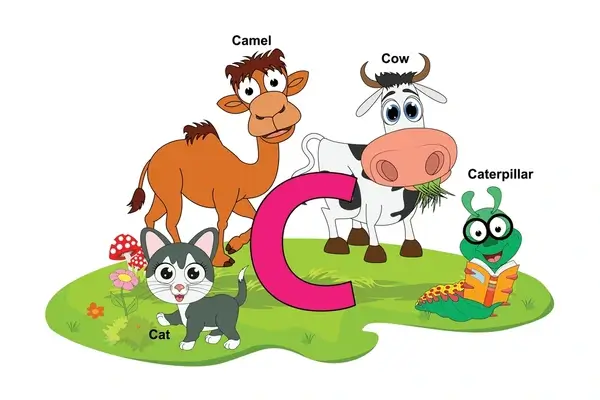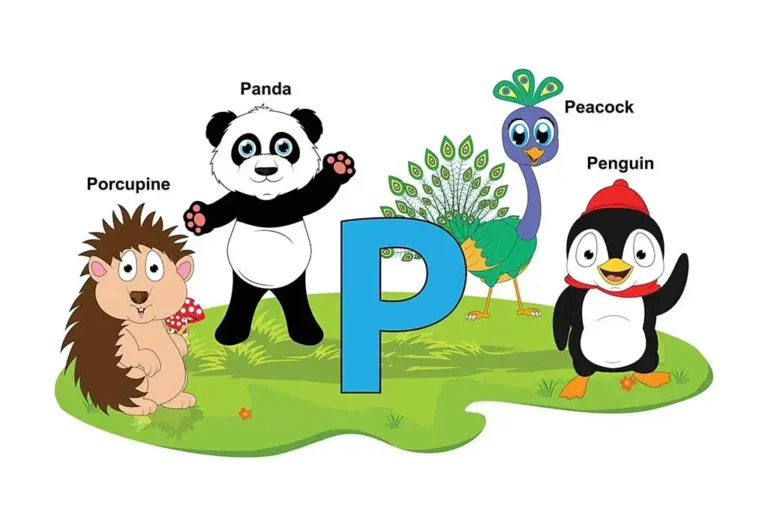Top Animals That Start With Y: A Fascinating Journey into the Animal Kingdom
The animal kingdom is vast and diverse, filled with creatures that amaze us with their uniqueness and adaptability. Among them are some fascinating animals whose names begin with the letter “Y.” While they may not always be the most famous, they offer a rich blend of intrigue, wonder, and discovery. From the ocean’s mysterious depths to the expansive savannahs and dense rainforests, these animals bring a mix of exoticism and charm to the natural world.
This comprehensive guide takes you through the top animals that start with Y, uncovering their distinctive characteristics, habitats, and behaviors. Each creature has its own story, quirks, and important role in the ecosystem, making them truly special.
Contents
- 1 Alphabetical List of Animals That Start with Y | animals beginning with y
- 2 Why Learn About Animals That Start With Y?
- 3 Exploring the Diversity: Top 10 Animals That Start With Y
- 4 1. Yellowfin Tuna (Thunnus albacares)
- 5 2. Yak (Bos grunniens)
- 6 3. Yellow Anaconda (Eunectes notaeus)
- 7 4. Yellow-eyed Penguin (Megadyptes antipodes)
- 8 5. Yeti Crab (Kiwa hirsuta)
- 9 6. Yellow-bellied Marmot (Marmota flaviventris)
- 10 7. Yellow Mongoose (Cynictis penicillata)
- 11 8. Yellow-billed Hornbill (Tockus leucomelas)
- 12 9. Yellowtail Barracuda (Sphyraena flavicauda)
- 13 10. Yellow-throated Marten (Martes clavicula)
Alphabetical List of Animals That Start with Y | animals beginning with y

| Common Yabby | Yellow-eyed Penguin | Yellowthroat |
| Yacare Caiman | Yellow-faced Bee | Yokohama Chicken |
| Yabby | Yellowfin Tuna | Yoranian |
| Yak | Yellow-footed Antechinus | Yorkie Bichon |
| Yakutian Laika | Yellow-footed Rock Wallaby | Yorkiepoo |
| Yarara | Yellow Ground Squirrel | Yorkshire Terrier |
| Yellow Anaconda | Yellowhammer | Yucatan Squirrel |
| Yellow Aphids | Yellowish Cuckoo Bumblebee (formerly Fernald’s Cuckoo Bumblebee) | Yuma Myotis |
| Yellow Baboon | Yellowjacket (Yellow Jacket) | Water Opossum |
| Yellow Bass | Yellow Mongoose | Yeti Crab |
| Yellow-backed Duiker | Yellow-nosed Cotton Rat | Yellow Warbler |
| Yellow-bellied Marmot | Yellow Perch | Yellow-footed Rock Wallaby |
| Yellow-bellied Sapsucker | Yellow Pine Chipmunk | Yellow-bellied Weasel |
| Yellow-bellied Sea Snake | Yellow Sac Spider | Yellow Tang |
| Yellow-billed Stork | Yellow Spotted Lizard | Yellow-throated Marten |
| Yellow Bullhead Catfish | Yellow Crazy Ant | Yellow Tanager (Black-and-Yellow Tanager) |
| Yellow Cobra |
Why Learn About Animals That Start With Y?
Understanding and learning about different animals broadens our knowledge of the natural world and fosters a deeper appreciation for biodiversity. Animals that start with the letter “Y” are particularly unique, often showcasing unusual traits and adaptations that have helped them survive and thrive in their respective environments. This guide offers educators, parents, and animal enthusiasts an engaging way to explore lesser-known species and their remarkable lives. From the Yellowfin Tuna’s vibrant colors to the Yeti Crab’s peculiar habits, these animals provide a window into the wonders of evolution and natural history.
More animals that start with: A | B | C | D | E | F | G | H | I | J | K | L | M | N | O | P | Q | R | S | T | U | V | W | X | Y | Z
Exploring the Diversity: Top 10 Animals That Start With Y
1. Yellowfin Tuna (Thunnus albacares)

- Habitat: Tropical and subtropical oceans worldwide
- Characteristics: Yellowfin Tuna are known for their speed and agility in the water. They have a distinctive torpedo-shaped body, which allows them to cut through the water with minimal resistance. Their bright yellow dorsal fin, tail, and silver sides make them easily recognizable.
- Behavior: These fast swimmers can reach up to 50 miles per hour. Yellowfin Tuna are known to migrate across vast ocean distances and often swim in schools with other tuna species or even dolphins.
- Diet: Primarily feed on fish, squid, and crustaceans.
- Conservation Status: Near Threatened due to overfishing.
2. Yak (Bos grunniens)

- Habitat: High-altitude regions of the Himalayas and Central Asia
- Characteristics: Yaks are long-haired bovines well-adapted to cold mountainous climates. Their thick coat and underlayer of soft fur keep them insulated against freezing temperatures.
- Behavior: Yaks are social animals, often found in herds. They are known for their calm demeanor and ability to graze in harsh terrains where other animals cannot survive.
- Diet: Herbivorous; primarily feeds on grass, moss, and lichens.
- Conservation Status: Domesticated yaks are common, but wild yaks are considered Vulnerable due to hunting and habitat loss.
3. Yellow Anaconda (Eunectes notaeus)

- Habitat: Swamps, marshes, and slow-moving rivers in South America
- Characteristics: Smaller than its relative, the Green Anaconda, the Yellow Anaconda can grow up to 13 feet long. It has a yellowish-green body with black or dark brown patches.
- Behavior: Known for its solitary and nocturnal habits, the Yellow Anaconda spends much of its time in water and is an excellent swimmer. It uses its powerful body to constrict prey.
- Diet: Carnivorous; feeds on small mammals, birds, fish, and amphibians.
- Conservation Status: Not currently threatened, but habitat destruction poses a risk.
4. Yellow-eyed Penguin (Megadyptes antipodes)

- Habitat: Coastal regions of New Zealand
- Characteristics: One of the rarest penguin species, the Yellow-eyed Penguin, has striking pale yellow eyes and a yellow band running from its eyes around the back of the head.
- Behavior: Unlike most penguins, they are known to be solitary nesters. They use dense vegetation to hide their nests in secluded areas to avoid predators.
- Diet: Primarily feeds on small fish and squid.
- Conservation Status: Endangered due to habitat destruction, introduced predators, and human activities.
5. Yeti Crab (Kiwa hirsuta)

- Habitat: Deep-sea hydrothermal vents in the South Pacific Ocean
- Characteristics: A crustacean with pale, almost translucent bodies covered in bristle-like setae, giving it a “hairy” appearance. The Yeti Crab is adapted to the extreme environment of the deep sea.
- Behavior: These crabs are believed to cultivate bacteria on their “hairy” claws, which they then consume. They perform a “dance” by waving their claws in the nutrient-rich water to promote bacterial growth.
- Diet: Bacteria cultivated on their claws and small organisms found in hydrothermal vent environments.
- Conservation Status: Not evaluated due to their recent discovery.
6. Yellow-bellied Marmot (Marmota flaviventris)

- Habitat: Rocky mountains, meadows, and grasslands of North America
- Characteristics: These large ground squirrels have a characteristic yellow belly, bushy tail, and brown fur with white spots. They are known for their loud whistles, which they use to communicate danger.
- Behavior: Highly social and often seen basking on rocks in the sun. They hibernate for about eight months of the year, emerging in spring to feed and breed.
- Diet: Herbivorous; primarily feeds on grasses, flowers, and seeds.
- Conservation Status: Least Concern, with stable populations.
7. Yellow Mongoose (Cynictis penicillata)

- Habitat: Open grasslands, savannas, and scrublands of Southern Africa
- Characteristics: Recognizable by their yellowish fur and bushy tail, Yellow Mongooses are small carnivorous mammals that often live in colonies.
- Behavior: They are highly social animals that live in caves and are active during the day. They use various vocalizations and body language to communicate within their group.
- Diet: Insects, small rodents, and birds.
- Conservation Status: Least Concern.
8. Yellow-billed Hornbill (Tockus leucomelas)

- Habitat: Dry savannas and woodlands of Southern Africa
- Characteristics: Known for their large yellow beaks, these birds have a distinctively curved shape and are highly adapted to their arid environment.
- Behavior: They often hop on the ground or fly between trees for food. They are also famous for their mutualistic relationship with dwarf mongooses, sharing food and looking out for predators.
- Diet: Omnivorous; eats insects, fruits, and small reptiles.
- Conservation Status: Least Concern.
9. Yellowtail Barracuda (Sphyraena flavicauda)

- Habitat: Tropical and subtropical waters of the Indian and Pacific Oceans
- Characteristics: A slender, predatory fish with a streamlined body, the Yellowtail Barracuda is characterized by its yellow tail and elongated shape.
- Behavior: Often swims in schools, especially when young, but becomes more solitary with age. Known for its aggressive predatory behavior.
- Diet: Carnivorous; feeds on small fish and invertebrates.
- Conservation Status: Not currently threatened.
10. Yellow-throated Marten (Martes clavicula)

- Habitat: Forested regions across Southeast Asia
- Characteristics: This marten has a striking yellow throat and chest, a bushy tail and a sleek body. It is known for its agility and ability to climb trees.
- Behavior: They are solitary and highly territorial. Known for their playful nature, they often engage in elaborate chases and mock fights.
- Diet: Omnivorous; feeds on small mammals, birds, fruits, and honey.
- Conservation Status: Least Concern, although habitat destruction poses future threats.
Conclusion: Discovering the Wonders of the “Y” Animals
Each of these animals that start with the letter Y brings something unique, highlighting Earth’s vast diversity of life. From the Himalayas’ high peaks to the Pacific Ocean’s deep-sea vents, these creatures showcase the extraordinary adaptability of wildlife.
Understanding these animals’ lives, habits, and environments helps us appreciate the rich tapestry of the animal kingdom. It reminds us of the importance of conservation efforts to protect these remarkable species. As we delve deeper into the natural world, we uncover facts, figures and stories that inspire wonder and a commitment to preserving the biodiversity that makes our planet unique.
- Are Rottweilers Good With Kids? Reasons & Training Tips - 17 September 2025
- How Long Are Dogs Pregnant: Complete Guide - 16 September 2025
- German Shepherd Doberman Mix: Info, Pictures, Care & More - 11 September 2025







